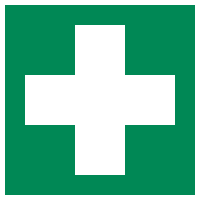
Photo from wikipedia
BACKGROUND Dental attendances to Paediatric Emergency Departments (PEDs) represent suboptimal use of resources of an unknown scale. AIM Evaluate dental attendances at two PEDs in the UK and compare Traumatic… Click to show full abstract
BACKGROUND Dental attendances to Paediatric Emergency Departments (PEDs) represent suboptimal use of resources of an unknown scale. AIM Evaluate dental attendances at two PEDs in the UK and compare Traumatic Dental Injury (TDI) and Non-Traumatic Dental Conditions (NTDC). DESIGN Retrospective data collected for a 12-month period including demographics, attendance pattern, assessment and management. Maxillofacial conditions were excluded, attendances were grouped as TDI and NTDC. RESULTS Of 667 attendances, 35.1%(n=234) were TDI and 64.9%(n=433) NTDC. Nineteen children reattended. Proportionately more TDI attenders were male, White British, of lower mean age, and resided in less deprived areas than for NTDCs. Over half, 52.3%(n=339) of attendees, resided in the 10% most deprived UK areas. Saturday and Monday were modal attendance days; attendance peaked in summer. Over half, 56.4%(n=376) attended out-of-hours. A majority, 74.8%(n=499) self-referred and half accessed no other service prior to PED attendance. No PED dental input was received for 38.7%(n=258), 12.4%(n=83) received dental treatment. Antibiotics were provided for 42.1%(n=281) and 15.4%(n=103) were admitted. CONCLUSION Dental abscesses and toothache accounted for half of attendances, many of these children may be managed in primary care. Improved signposting to alternative dental services for non-urgent conditions may better allocate resources to those with urgent need.
Journal Title: International journal of paediatric dentistry
Year Published: 2021
Link to full text (if available)
Share on Social Media: Sign Up to like & get
recommendations!